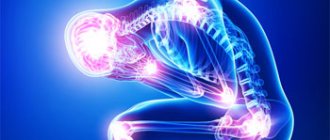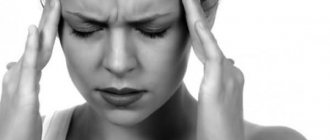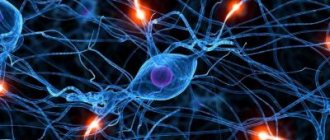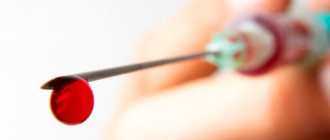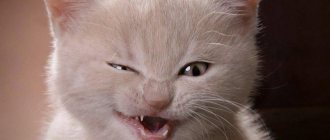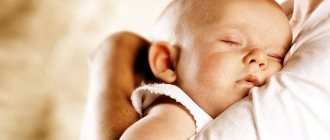Main symptoms:
- Headache
- Dizziness
- Trembling limbs
- Itchy skin
- Convulsions
- Obsessions
- Impaired movement coordination
- Nervousness
- Skin redness
- Loss of consciousness
- Muscle spasm
- Fear
- Nausea
- Random heartbeat
Trypophobia is a condition in which a person experiences panic fear when seeing holes, cluster holes (many holes), bubbles in the dough, skin abscesses, etc. Trypophobia, the symptoms of which, despite the fact that the disease is not recognized in official medicine, noted by about 10% of the population, manifests itself in the form of nausea, skin itching, nervous tremors and general discomfort when the listed causes of this phobia appear in the field of view.
- general description
- Symptoms
- Treatment
Causes of trypophobia
Trypophobia is considered one of the youngest phobias - they first started talking about it in 2000, and it received its name 4 years later. It is derived from the Greek words tripo (drilling holes) and phobos (fear).
It is believed that fear, or rather disgust, at the sight of clusters of holes is present to some extent in everyone. It is evolutionarily justified and embedded in the genetic memory of people, inherited by us from distant ancestors. They tended to experience a fear of animals or plants, which posed a real threat to life in those distant times.
For example, the characteristic pattern of spots on the body of predatory cats or snakes evoked a strong association with danger, which is why it began to serve as a kind of warning about it for ancient people. Over subsequent generations, a similar reaction accumulated and was passed on to modern people. However, if in the case of dangerous animals it is natural, then in other situations, when there is no real threat to life, it is considered pathological.
Another reason for the appearance of trypophobia in some individuals may be the identification of holes or their concentrations with serious infectious diseases. For squeamish and overly sensitive people, an attack of fear can be triggered by the sight of a person whose face or body has rashes, sores or scars. Defects and lesions of the skin cause such trypophobes a persistent disgust and an irresistible desire to quickly get away from what they believe is a person suffering from a contagious disease. The reason for this reflex also lies in genetic memory - our ancestors thus instinctively tried to avoid interaction with sick relatives so as not to become infected themselves.
The cause of the development of trypophobia can also be an abnormal psychological reaction, when a person, looking at the holes, imagines that something might emerge from them and harm him.
But most often the cause of the fear of holes is real cases when a person has been harmed. For example, bees may attack him and bite him. From this day on, honeycombs or any holes resembling them will cause attacks of fear and panic in such a person.
A person's age also affects whether they will develop trypophobia. According to statistics, over the years people are increasingly inclined to succumb to attacks of this phobia.
Origins of the problem
Trypophobia is also called the fear of open holes, cavities, holes, skin abscesses, and so on. Today, the most famous researchers of this type of fear are the University of Essex scientist Geoff Cole and his colleague Arnold Wilkins. They suggested that trypophobia is one of the most common phobias on earth, since at the sight of multiple holes, many people experience unpleasant sensations, for example, nervous tremors, itchy skin, nausea, and a feeling of discomfort.
After a series of studies, Cole and Wilkins hypothesized that trypophobia is based on a primal fear of poisonous animals, wasps, and poisonous flowers. Most often, a pathological reaction occurs to images with pronounced contrasting round objects. Researchers have suggested that trypophobia is an evolutionary advantage.
When does trypophobia appear?
The main influence on the appearance of trypophobia in a person is the structure of the image that he sees. Most often, fear and confusion are caused by a picture consisting of small contrasting details (circles or stripes) located very closely to each other.
For this reason, harmless holes can become potential objects that provoke an attack of fear:
- in products (cheese, dough, aerated chocolate, bread, honeycomb);
- in plant seeds (lotus fruits, corn, sunflowers, peas);
- in plant and animal organisms (the passages of worms and caterpillars, muscle fibers, veins);
- in geological objects.
An attack of fear can also be caused by raindrops on glass or condensation, enlarged pores, wounds, rashes and acne on the skin of another person or your own. An attack of trypophobia can also be caused by photographs that depict poisonous animals with a characteristic pattern consisting of circles or stripes (cobras, scorpions, octopuses).
What is trypophobia
Every person has some kind of fear, but approaches it differently.
There are often people who are afraid of the accumulation of holes. This fear is called trypophobia. The term takes its name from the Greek word trypo (punching or drilling holes).
Trypophobia has emerged with a strong increase in online picture sharing. In 2000, people noticed that they were united by disgust or fear of photographs of objects with a considerable number of small holes.
For example, this list includes small holes in cheese. For decades, trypophobia was an internet phenomenon. Later, researchers provided evidence and reasons for its occurrence.
The term was coined by an unknown woman from Ireland. The first time she talked about it was on a web forum in 2005. After that, a group appeared on Facebook that explored the topic of trypophobia.
Then they created a website with the same name, where they posted videos and images. More and more videos about this phobia were posted on You Tube. Wikipedia constantly created an article, but then deleted it due to unreliable sources.
In 2010, two English-speaking psychologists photographed lotus seeds under a powerful microscope and presented them to 286 subjects (ages ranging from 18 to 55 years). 11% of males and 18% of females described the photo as “creepy and disgusting.”
The accumulation of holes in basic objects, similar to lotus seeds or dough bubbles, provokes unpleasant discomfort.
It has become known that about 10% of the population suffers from this phobia. By the way, it is considered the most common in the world.
Jeff Cole, suffering from a fear of such a plan, discovered that pictures often depicted poisonous organisms with small holes in their skin. Without controlling his subconscious, a person, looking at some images, will immediately notice what he is afraid of.
All phobias appear unexpectedly, for no apparent reason. Trypophobia can be either hereditary or age-related. The occurrence of a phobia is facilitated by mental or social perception.
Often the phobia manifests itself through family problems or the unreliable influence of people. Impressionable people suffer the most from the fear of holes.
It happens that trypophobia manifests itself in the form of uncontrollable anger or fear. If it is advanced, symptoms may include headaches, convulsions or spasms. After this, serious mental problems may appear .
More than a thousand people have a great fear of being near buildings with holes or recurring accumulations. This is an incomprehensible, constant fear of small holes that look like asymmetrical clusters.
The visuality of images greatly influences the induction of unpleasant sensations. The pictures may have small contrasting elements in the form of dots or stripes.
Most people find it rather unpleasant to see patterns that are associated with the animal world. The cause of the phobia is said to be an association with dermatological lesions (ulcers, scars).
The theory of trypophobia in the form of aversion to defeat is confirmed by the fact that it is a defensive reaction in the psyche. She used to help avoid contracting diseases from others .
Such people feel uncomfortable when they look at objects with holes or indentations.
This often happens when viewing enlarged photographs of plants or animals. They also find it unpleasant to look at the human body (skin).
Such people are afraid of holes in meat, fruits and vegetables, skin pores, holes in sponges, trees and even honeycombs. Some people, hearing the simple phrase “fear of holes,” begin to worry and tremble.
Trypophobia refers to unpleasant sensations generated when viewing any hole or the process of its construction.
For example, you can see a person’s reaction to squeezing a pimple or parasites crawling out of the body. Of course, this is disgusting for everyone, but there is a specific fear.
Those suffering from trypophobia experience uncontrollable fear of any object or organism. Performance decreases, coordination is lost, dizziness, nausea, vomiting, and a nervous state of the body appear.
A person with this phobia may feel a foreign object moving around the body. Some shudder and begin to itch when they see objects with holes.
Others begin to feel sick and feel intense disgust. The thoughts of others fall straight into the hole, as a result of which a panic attack occurs.
Objects of fear are holes in moving objects, in the tissues of people and animals, acne, pores, dermatological lesions, muscle openings or glandular holes.
Fear is caused by holes in products, which include veins and streaks in meat, holes in bread, circles of cheese . Plants are also disgusting, especially bean pods, corn and seeds.
Such people are also afraid of holes of natural origin (rock, organic and natural resources).
Trypophobia can be expressed by allergies, redness or paleness, and excessive sweating.
With such a phobia, the heart beats faster, breathing becomes more difficult, and the limbs tremble. Due to nervous tension, bright spots may form on the body.
Trypophobia appears as a result of views, opinions and phenomena in certain associations or groups.
The phobia also arises through family relationships or is transmitted through the family. Fear appears as a result of life changes, experiences or problems experienced.
Fears accumulate, which causes seizures or poor coordination. A phobia can occur along with uncontrollable fear, obsession, as well as general nervousness and vomiting.
To get rid of such fear, you need to see a psychotherapist . In practice, it has been shown that presenting first a normal image and then a rejecting one gradually eliminates the phobia.
The person calms down, and when he sees a bad picture he no longer thinks about fear. Only treatment occurs gradually. Breathing exercises are recommended.
Almost everyone has trypophobia, because everyone hates to look at unsightly holes on the skin or on their household items. However, there is no need to immediately enroll in the category of those who are afraid, because such a phobia passes.
Symptoms of trypophobia
Trypophobia is manifested by various psycho-physiological reactions inherent in many other phobias. Their intensity varies from severe discomfort and the desire to immediately move away from the stimulus to pronounced negative reactions: hysteria, panic, stupor, shock.
At the same time, a person may sweat, tremble, turn pale or, conversely, blush and be covered with red spots, breathe heavily, feel sick, have a rapid heartbeat, and become dizzy. In severe cases, an attack of fear of holes can be accompanied by severe headaches, spasms and convulsions.
Such reactions, as with other phobias, appear automatically, regardless of a person’s will, immediately after a potential irritant appears in his field of vision. A trypophobe is simply unable to rationally assess the situation and react calmly to it.
Treatment
In the treatment of trypophobia, consultation with a doctor comes to the fore, who determines the entire range of necessary therapeutic techniques:
- corrective, substitution methods for mental rehabilitation (alternating pacifying images and images of many round holes in order to gradually eliminate feelings of discomfort);
- psychoanalysis;
- desensitization (a set of measures aimed at normalizing the patient’s physical and psychological self-perception);
- group and individual psychotherapy sessions;
- breathing, calming, relaxing self-regulation exercises;
- sedatives;
- antiallergic drugs;
- treatment in a hospital with the use of anti-inflammatory, anticonvulsant, sedative medications (for severe forms of phobia).
Symptoms of pathology
A phobia causes in the patient very specific feelings of discomfort and panic that appear when exposed to an irritant. Signs of a phobia may include:
- dizziness;
- cardiopalmus;
- increased nervousness;
- paleness or redness of the skin;
- the appearance of cold sweat on the forehead;
- loss of coordination;
- state of panic, hands shaking;
- nausea;
- allergic rashes;
- interruptions in breathing;
- vomit.
It is noteworthy that trypophobia is focused on the fear of holes, wherever they are, and this is not necessarily related to a person’s health. Phobias arise in relation to:
- holes caused by damage by insects (holes on leaves, holes in apples from worms);
- holes in the skin (gland ducts, holes in the skin from viral diseases, for example, herpetic wounds);
- holes in plants, food (for example, bubbles in porous chocolate, honeycombs, etc.);
- natural holes (recesses in wood, stones, etc.).
Patients are afraid of more than just one hole. In severe forms of the disease, the disease causes hallucinations; patients see cluster holes on the human body - clusters of holes throughout the body that actually do not exist. Over the course of life, the phobia can either get worse or be felt much less.
Frequent signs and symptoms of existing disease
When contacting cluster holes of living or inanimate nature, a person subject to fear experiences characteristic visible physiological changes indicating symptoms:
- - the heart rate increases sharply, jerky vibrations of the artery walls increase;
- - there is an urge to reflexively erupt the contents of the stomach;
- - the color of the skin changes;
- - the processes of coordinating the movement of body muscles are disrupted, coordination of movement worsens;
- - severe dizziness occurs;
- - the work of the sweat glands is activated;
- - involuntary rapid movements of the limbs, body, sharp muscle contractions are observed;
- - breathing becomes difficult, throat spasms appear;
- - frequent causeless itching of the skin surface spreads.
In an advanced form of the disease, a person suffers from headaches, convulsions appear, and the functions of internal organs are disrupted.
Why Repetitive Hole Phobia Occurs: Main Causes
Even those who do not know what trypophobia is, and have not encountered this fear first-hand, often still have a negative attitude towards cluster holes. Why did humanity develop an aversion to repetitive holes? The exact reasons are unknown. However, it is believed that phobia-level fear of holes arises due to the influence of the following factors:
- Biological reaction. People unconsciously evaluate the surrounding reality for the degree of safety. And cluster holes do not fit into this criterion. They seem suspicious because they may contain something dangerous, such as poisonous insects. Another example: skin covered with holes indicates a disease, and healthy people instinctively avoid such a person.
- Negative experience. Many phobias arise after some unpleasant incident has contributed to the establishment of an association between danger and a certain object. Fear of holes and openings can develop after unsuccessful “contact”, for example, with a honeycomb. The bites of these insects can provoke not only trypophobia, but also fear of the bees themselves.
- Fixed childhood perceptions. Being small, a person explores the world from the perspective of a child. At this time, the formation of personality is significantly influenced by fantasies, books, films, and stories of adults. And if the child remembers that for some reason the holes are dangerous, he is quite capable of transferring this perception into the next life. For example, trypophobia can occur after a scary movie where blood flows from the shower head, or after a parent's joke that someone will jump out of a hole in the ground and grab your leg.
- Heredity and genetic predisposition. A certain category of people, in principle, more often than others face various irrational fears. First of all, this includes people from families in which one or both parents themselves suffered from phobic disorders (the chance that the same thing will happen to the child increases by 50%). Character also plays a role. Impressionable, suspicious, trusting and vulnerable people are more likely than others to encounter pathological fear, which means they are more likely to develop a fear of cluster holes.
Whatever the reason for the formation of trypophobia, living with this fear is often not very convenient. What kind of comfort are we talking about if a person gets nervous at the sight of cheese? Therefore, those whose fear of small holes has reached an impressive scale are recommended to undergo treatment. If the anxiety is very weak and controllable, then you can do without therapy, limiting yourself to self-control training.
Views on the causes of the disease
The question is often asked: why does trypophobia occur? Experts who study the problems of phobias believe that it is inherent in all people. It is distinguished by different reactions of the human body to the forms of its manifestation: some suffer this disease in a pronounced form, others experience a slight disturbance of calm when looking at objects with an accumulation of surface depressions.
There are theories that state: mental changes in personality are the result of human evolutionary development, arose as a result of the widespread influence of biological factors (fungi, animal parasites) on the skin of distant human ancestors. Small animal organisms, insects, getting under the outer covers of the body, caused the appearance of suppuration, inflammatory processes, where numerous small holes appeared. In other situations, the danger arose from poisonous animals, the pattern of the skin surface of which was in the form of small holes.
The fear that emerged was the body’s reaction to potential death. Part of the human brain recorded images of cluster holes as a source of mortal danger. This reaction was passed on to offspring. As a result, looking at an image of an object with many holes gives rise to a feeling of uncontrollable fear, which is one of the signs of the disease.
Reading: Thrush and how to treat it at home.

